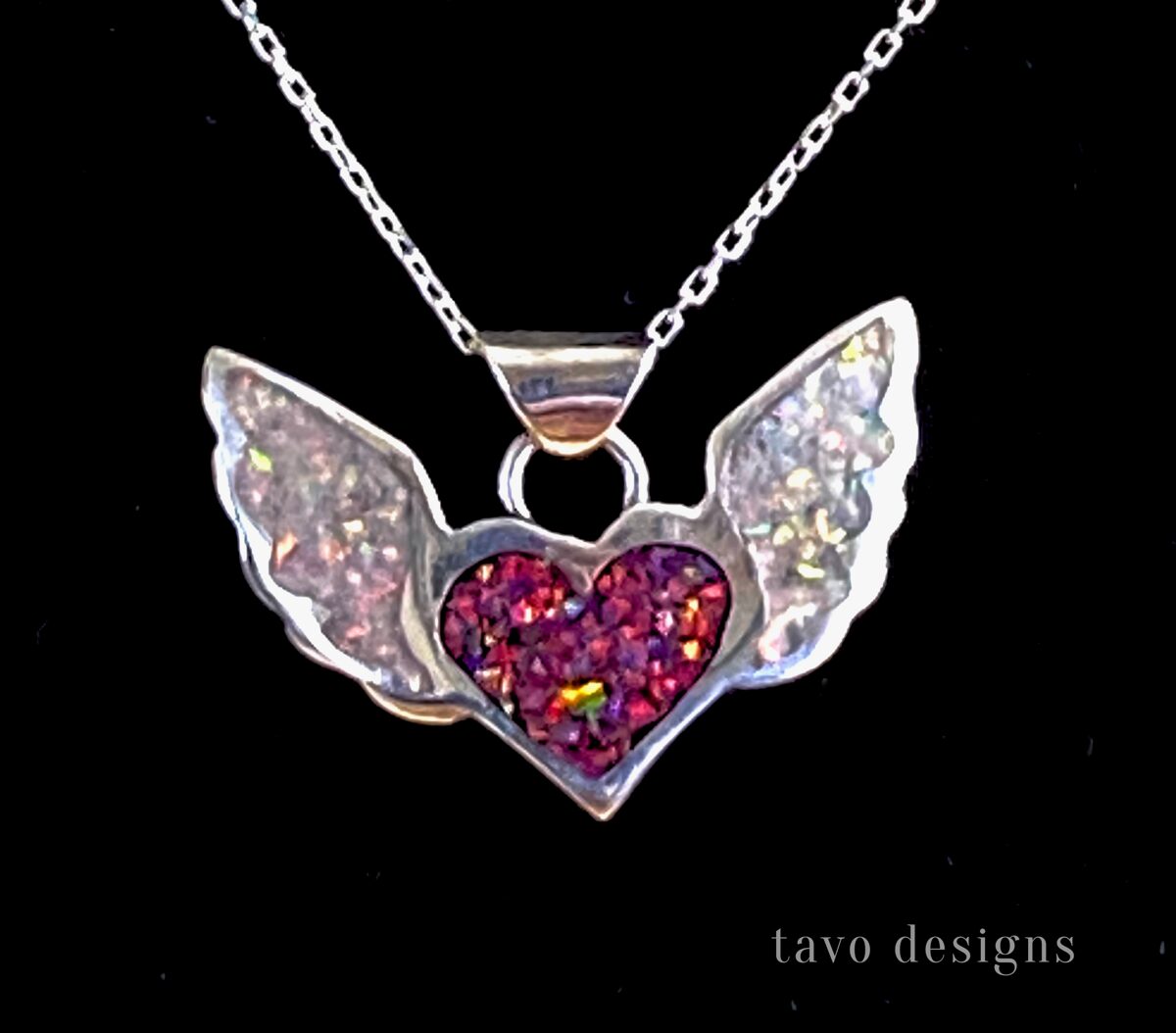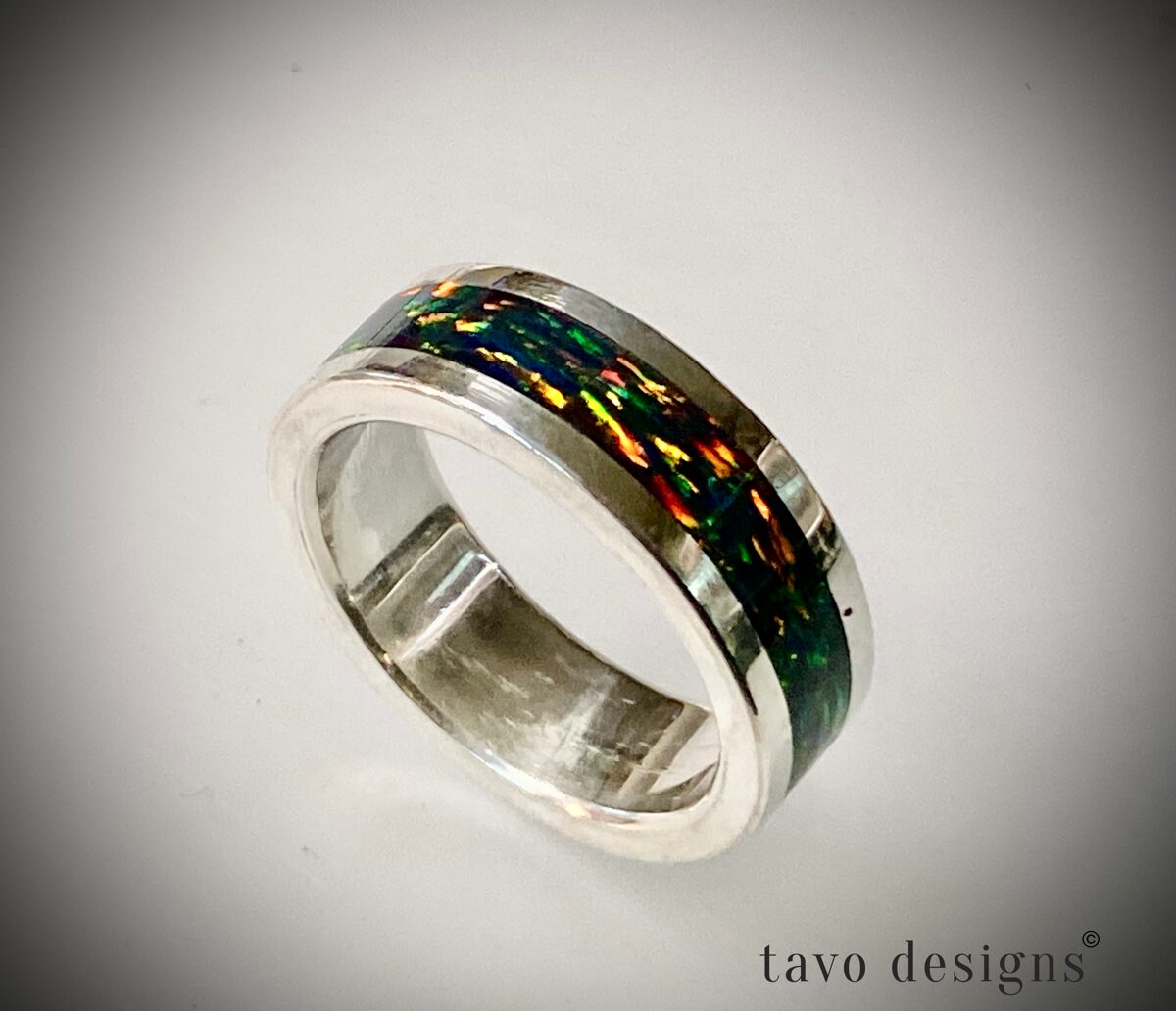Are you wondering what the difference is between an opal inlay ring and a crushed opal ring?
The difference between a crushed opal ring and an opal inlay ring mainly lies in the type and appearance of the opal used, as well as the crafting technique. The same technique applies to pendants and other types of inlay jewelry.
Here’s a breakdown of each type and their qualities:
Crushed Opal Ring
- Material: Crushed opal consists of real or lab-created opal pieces that have been broken down into small fragments or powders. These fragments are often mixed with a resin or epoxy to create a composite material that is used for the inlay.
- Visual Effect: Because the opal is crushed, the resulting appearance is more uniform and can be highly colorful, with a glittering, sparkly effect. The resin used to bind the opal pieces can be tinted with colors to enhance or complement the natural opal fragments.
- Durability: The use of resin or epoxy makes the crushed opal composite quite durable and resistant to cracking or breaking compared to solid opal. This is particularly beneficial for rings, which are subject to frequent wear and tear.
- Variety: Crushed opal can be made from various types of natural or lab-created opal and can be combined with different colors of resin, offering a wide range of colors and patterns.
 |  |
Example of crushed opal pendant (left) and inlay ring (right)
Opal Inlay Ring
- Material: Opal inlay rings feature larger, solid pieces of opal that are cut to fit precisely into channels or cavities within the ring’s metal. The opal is generally whole and not mixed with any other substance.
- Visual Effect: This method allows for a smoother, often more refined look compared to the speckled appearance of crushed opal. The continuity of the piece allows for a more cohesive play-of-color across the opal's surface.
- Durability: While natural opals are beautiful, they are also somewhat fragile and can be prone to scratching, cracking, or breaking if not handled carefully. The inlay process offers some protection, as the opal is surrounded by metal, but the opal itself remains more delicate than the crushed and resin-bonded version. This is the reason why lab-created opal is used in many jewelry, especially inlaid rings for its superior durability compared to natural opals.
- Authenticity: Opal inlay rings are often more valued by collectors and enthusiasts who appreciate the natural or consistent look of the gemstones with minimal alteration or enhancement.
Choosing Between Them
- Aesthetic Preference: If you prefer jewelry with a high degree of sparkle and uniformity, a crushed opal ring might be appealing. If you value the unique characteristics of the opal gemstone, an opal inlay ring might be more suitable.
- Durability Needs: For rings that will be worn daily and exposed to rough use, crushed opal rings may be more practical due to their enhanced durability.
- Budget Considerations: Crushed opal rings can sometimes be less expensive due to the use of smaller, less perfect opal fragments and the combination with resins. Opal inlay rings can vary in price depending on the quality and size of the opal used.
Ultimately, the choice between a crushed lab-created opal ring and a lab-created opal inlay ring should be guided by your personal style preference, the specific design and craftsmanship of the ring, budget, and how it fits into your lifestyle, especially considering factors like daily wear and durability.
If you have any questions regarding our opal jewelry feel free to contact me.
Tavo
Follow me on Instagram: @tavoartstudio
No comments
Leave a reply
Cart
Cart is empty.
